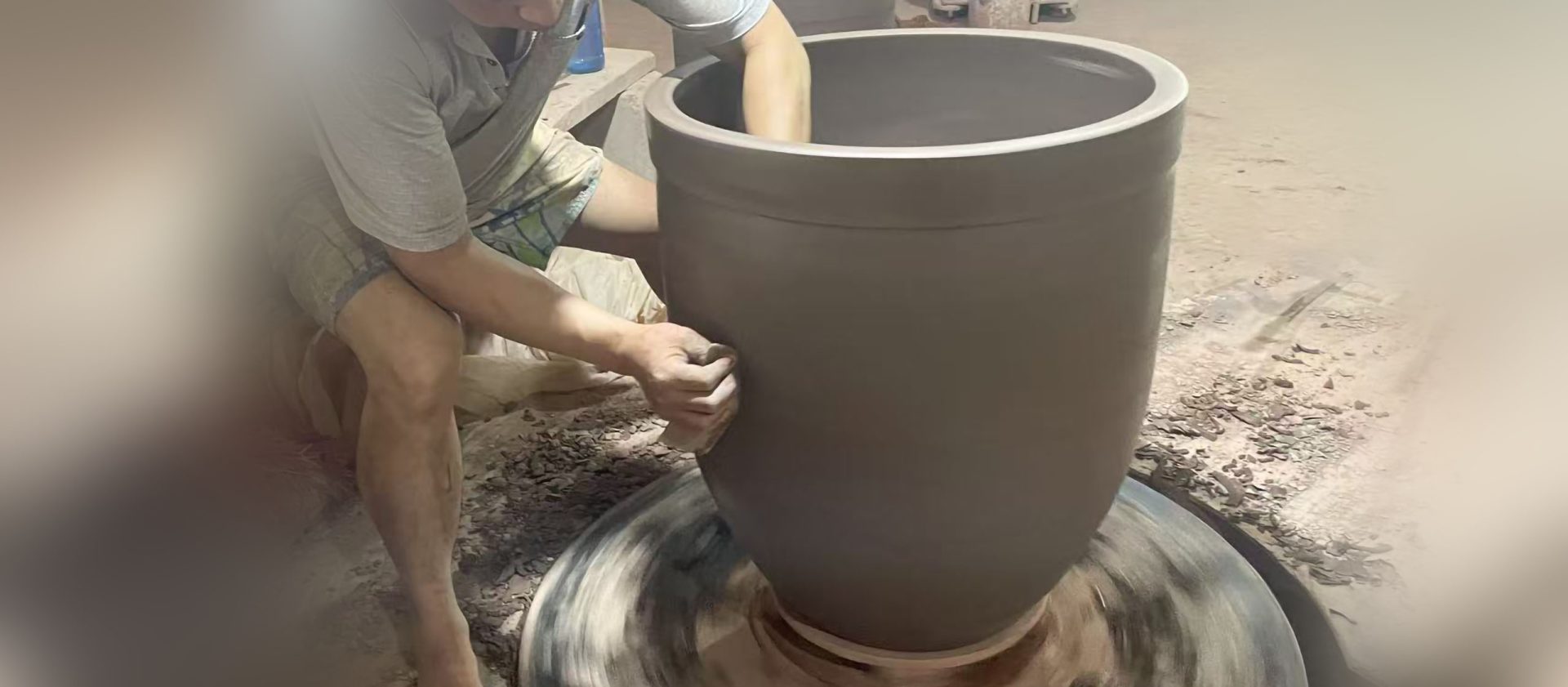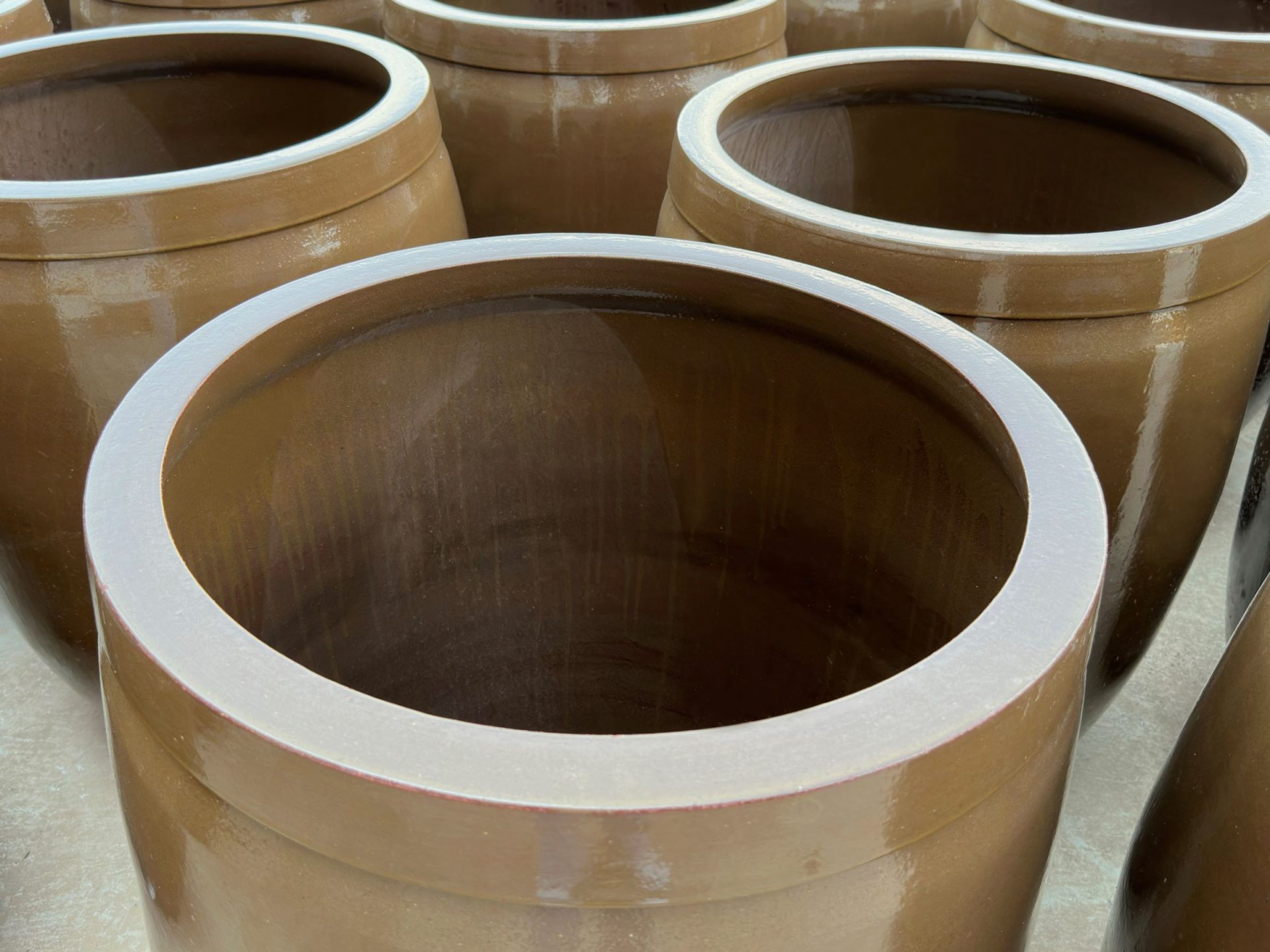The Ultimate Guide to Using A Fermentation Crock
In the food culture, a high-quality fermentation container is indispensable for making refreshing pickles or mellow pickled Chinese cabbage. Whether it’s a food workshop, enterprise, or home fermentation enthusiast, choosing the right fermentation crocks is the key to success.
Based on our years of experience, authentic clay fermentation crocks are the most reliable choice. It is different from glass containers in that the microporous structure formed by clay during firing allows the tank to naturally “breathe” – both removing excess carbon dioxide during fermentation and retaining beneficial bacterial communities, providing the best environment for perfect fermentation.
Today, based on years of experience in making fermentation equipment, I will explain step by step from “how to choose fermentation crocks”, “fermentation principles of fermentation crocks” to “daily usage techniques”. I hope it can help you really understand and make good use of it. The next time you make pickles and pickled Chinese cabbage, it will be easy and successfu.
What is a fermentation crock?
Fermentation Crock, also known as Kimchi Crocks or Kimchi fermentation crock, is a container specifically used for food fermentation. The material used to make is natural clay, which is fired at high temperatures to form a mold. The most common fermentation crock is designed with a wide mouth for easy operation and maintenance, and there is also a fermentation crown with water seal.
Its core design purpose is to create an anaerobic (anaerobic) environment for beneficial microorganisms such as lactic acid bacteria, so as to successfully transform vegetables, fruits and other foods into fermented foods such as pickles, pickled Chinese cabbage and enzymes.
How does the fermentation crock work?
The reason why clay fermentation crocks are more popular than glass fermentation crocks is that the breathable properties of clay itself cannot be replaced by other fermentation containers. Therefore, we need to further understand its working principle:
Before starting, it is crucial to understand the advantages of the tools in your hands. A high-quality best fermentation crock solves the most common problem in home fermentation through its unique design.
Creating an anaerobic environment: The core of fermentation is the hard work of lactic acid bacteria in an anaerobic environment. The thick clay walls and special water seal channel design of the fermentation crock can effectively isolate the air and prevent the growth of harmful mold and yeast.
Weight and stability: The weight of the clay jar itself and the accompanying weight stones can firmly press the ingredients below the water surface, which is the key to successful fermentation. Therefore, ensure that all ingredients are in contact with saltwater to avoid exposure to air and decay.
How to correctly use fermentation crocks correctly
A reliable fermentation crock is a prerequisite, and mastering the fermentation method by utilizing the characteristics of the fermentation crock itself is the key to success. Therefore, we need to conduct in-depth analysis from the following four aspects to make it easy for you to get started:
Step 1: Thoroughly clean and prepare
The importance of hygiene and cleanliness: Before fermentation begins, we need to clean all tools to avoid bacterial contamination.
Specific operation: Clean the fermentation crock, stone press, and inner lid with hot soapy water, and then thoroughly rinse them clean.
Step 2: Process the ingredients and put them into the jar
● Food preparation: Cut the vegetables you want to ferment (such as cabbage, carrots, cucumbers) and add salt and other spices according to the recipe.
● Canning technique: Tightly press the ingredients into the jar and try to expel as much air as possible. Then, pour in pre prepared saltwater (usually 2-5% salinity) until the ingredients are completely submerged.
● Manufacturer’s reminder: Our cans are usually marked with a Capacity Fill Line to help you accurately control the amount of ingredients and salt water, avoiding overfilling.
Step 3: Set water seal and wait
● Core operation: Place the compressed stones above the ingredients to ensure they are completely submerged. Then, pour the clean water into the water seal groove on the edge of the can lid. This water seal is like a one-way valve, allowing the release of carbon dioxide produced during fermentation while preventing external air from entering.
● Storage environment: Place the fermentation crock in a cool (preferably 18-22 ° C), dark place. Usually within a few days to a few weeks, you will see the production of bubbles, which is a sign of active fermentation.
Step 4: Tasting and Storage
When will it be completed? According to personal taste. Usually, after 1-4 weeks, when the acidity reaches your preference, fermentation is complete.
● Follow up processing: Remove the compressed stone, pack the fermented food into clean glass jars, and refrigerate in the refrigerator. Low temperature will greatly slow down the fermentation process, allowing delicious food to be preserved.
Common problems with using fermentation crocks
Q1:My fermentation crock has white residue on the inner wall, is this broken?
Don’t worry, this is usually harmless salt crystals or “yeast flowers”. This is due to the precipitation of minerals after water seal evaporation. They will not affect the safety or flavor of fermented foods. Simply scrub with warm water and baking soda after each use to remove it easily. This is a normal manifestation of the natural porous properties of our clay jars.
Q2: What should I do if the water in the water seal crock evaporates? Do I need to add disinfectant?
Never add disinfectants (such as bleach)! The evaporation of water in water sealed crock is normal, especially in dry environments. For specific operations, you only need to check regularly (every few days) and add clean water in a timely manner. Our water seal crock is designed to be wide, precisely to reduce the trouble of frequent water addition. Clear water itself can perfectly isolate the air.
Q3: What should I do if the ingredients float to the surface or if mold grows on the surface?
This is the most common problem encountered by beginners, and our stone pressing and wide mouth design are designed for this purpose.
Prevention: Ensure that a sufficiently heavy stone is used and the ingredients are fully compressed to keep them always below the liquid level.
Handling: If only a thin layer of mold has grown on the surface, carefully scoop it out and remove the top layer of ingredients that may be affected below. The food deep inside the can is usually still safe. But if the mold area is large or the color is abnormal, for safety reasons, it is recommended to discard the entire batch. Strictly following the canning steps can greatly avoid this problem.
Conclusion
The fermentation crock not only brings you healthy and delicious food, but also allows you to experience the sense of achievement created by yourself.
The clay fermentation crock is the most ideal container for food fermentation, which is very suitable for homemade kimchi fermentation, food workshops, restaurants, and food enterprises. It is easy to operate and user-friendly.
If you happen to be preparing homemade kimchi or are looking for a professional fermentation crock manufacturer to meet your fermentation needs. Therefore, before taking action, you may still have many questions. Therefore, you can further understand our manufacturing advantages, our clay factory, our fermentation crock manufacturing process and customized services, as well as our product quality control.
Of course, you can also consult our technical team in a timely manner to help you answer more questions about how to correctly choose the best fermentation crock and how to use it in detail, turning your dreams into reality and ultimately benefiting your project.

